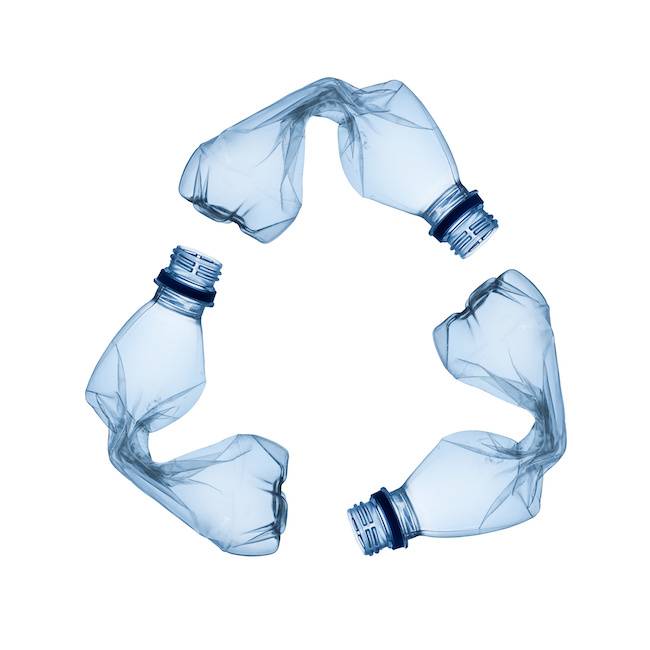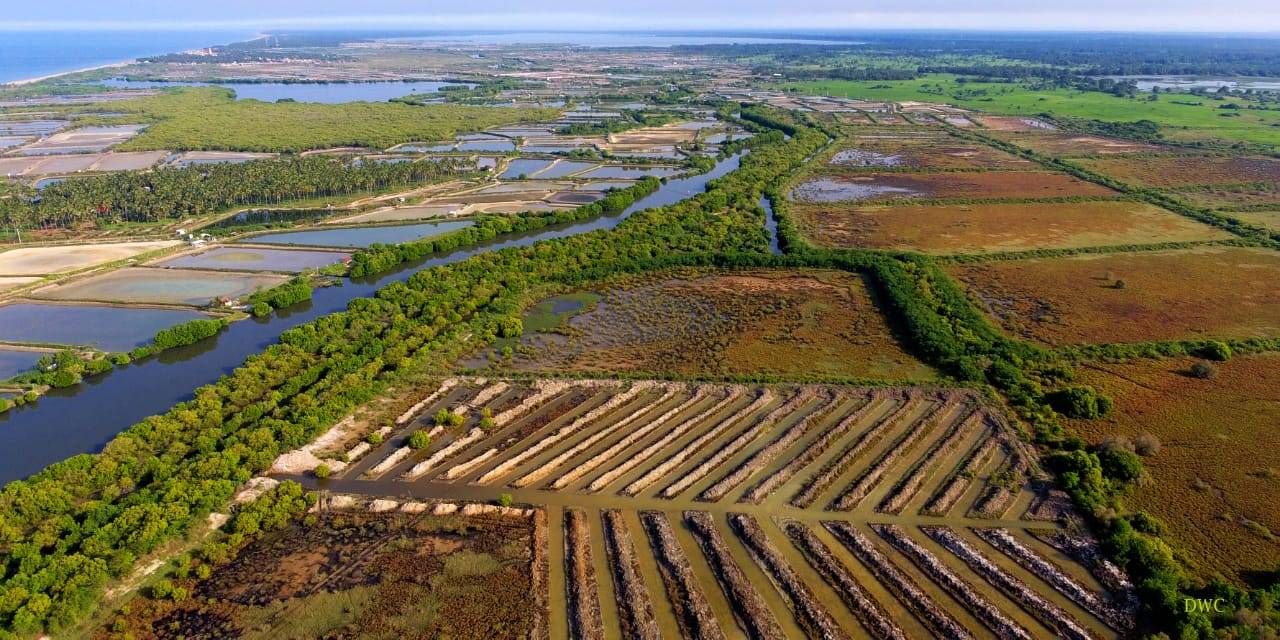
Material Recovery Facility: is it a game changer in plastic waste collection in Sri Lanka?
There are a number of plastic waste recyclers/processors successfully operating commercial operations converting plastic waste into marketable products. Existing processors have a substantial capacity to recycle plastic waste released into the market/environment and are willing and planning to expand their processing capacity. Though lack of accurate and reliable data on plastic use, volumes of plastic products in circulation, and the quantity of plastic waste collected in Sri Lanka are serious issues, it is estimated that around 20% of PET and 3% of HIPS are being collected at present. As per senior officials at the Central Environmental Authority, both formal and informal private sector actors in the plastic waste sector do not report on the quantities of their plastic waste collection and recycling at the moment. As the plastic recyclers are operating below capacity, increasing the collection of post-consumer plastic waste, and channeling them to reliable recycling operations are considered most crucial.
A framework for plastic waste collection has been developed through the project “Enhancing Extended Producer Responsibility (EPR) through a Public-Private Partnership Approach” which is being implemented by the Ceylon Chamber of Commerce (CCC) with the technical assistance of Biodiversity Sri Lanka (BSL). The purpose of the project, which has received the official endorsement of the Ministry of Environment (MoE), is to implement an EPR system for plastic waste on a voluntary basis which was developed using a consultative process by CCC and BSL, through USAID’s Municipal Waste Recycling Program (MWRP).
The overall objective of developing the Plastic Waste Collection Framework is to increase the collection and recycling of post-consumer plastic packaging in Sri Lanka, using a partnership approach. It also aims to examine the currently existing collection mechanisms and propose a common collection framework to streamline and strengthen plastic waste collection in the country, making recommendations to ensure successful execution.
Existing Plastic Waste Collection Options
The placement of waste collection bins is a common practice to facilitate and encourage responsible disposal of used plastics by consumers. A number of organizations particularly corporates such as Coca-Cola, John Keells (Plasticcycle), and Eco Friends have already placed waste collection bins in schools, supermarkets, hotels, temples, commercial establishments, expressways and many private sector companies have planned to support waste collection through this mechanism. The application of innovative mobile apps by Local Government Authorities (LGAs) to streamline waste collection is a recent breakthrough in Sri Lanka, since thus far, LGAs have relied only on traditional methods for waste collection. These Apps contain useful features including viewing the locations of garbage trucks, types of waste accepted and enables direct communications between officials and residents as well as allows posting of complaints.
There are a substantial number of more organized waste collectors, who have been registered with the Central Environment Authority (CEA) and/or the Western Province Waste Management Authority. (WP-WMA). Though, there is no huge variation in the scale of operation between the informal waste collectors and the registered waste collectors, the registered collectors can be considered as more organized as they are linked with regulatory authorities, thus having more access to information, guidance, and advice on proper waste collection practices.
Innovation in Plastic Waste Collection
Materials Recovery Facilities (MRFs) is a somewhat novel concept for Sri Lanka. The establishment of MRFs is aimed at collecting all types of waste at a central location, making waste collection more efficient and effective, allowing for increase of economies of scale as well as the ability to use new technologies for more efficient waste collection operations. The establishment and operation of MRFs are carried out as joint initiatives of corporates/brand owners and recyclers, which help recyclers to continue their waste processing operations efficiently, whilst providing opportunities for corporates/brand owners to fulfil their EPR responsibilities
Based on the trend in the recyclable waste collection market in Sri Lanka, the establishment of an integrated waste collection network which is primarily based on MRFs is proposed. Even though prominence is given to MRFs in the proposed integrated network, setting up of collection centers and other types of collection methods in peripheral areas are also encouraged and promoted as MRFs alone might find it challenging to meet high volume requirements, which is essential to cover the significantly high initial and operational cost of the MRFs.
The market entry to set up MRFs for collecting recyclable waste should be kept open to any interested new comers, without any entry barriers. It is essential for MRFs to work closely with existing and potentially new local level actors in each location in order to support local plastic waste collection efforts and livelihoods while ensuring that their collection volumes are fulfilled and they are at full operational capacity. Further, the proposed MRF-centered network is not considered a competing force against existing waste collection facilities such as collection centers. Moreover, the high cost of transportation of collected plastic waste, which is borne by informal and semi-organized actors at the moment, can get reduced through the proposed MRF network as collectors could deliver their collection to MRFs without transporting them to leading recyclers in Colombo.
Through careful assessment of existing collection mechanisms and based on the consultations with key players in the plastic waste value chain, there is general consensus that the most sensible and practical approach for increasing waste collection is to develop an integrated waste collection framework i.e. MRF Network, by strengthening existing collection mechanisms with closer and mutually beneficial linkages between the various actors in the value chain.

Biodiversity Sri Lanka launches its Second Public Private Community partnership – Life to Our Mangroves
The project ‘LIFE To Our Mangroves’ was officially launched on the 7th of February 2022 by Biodiversity Sri Lanka and its members. A simple function was held at the lawn of Dilmah Ceylon Tea Company PLC in Peliyagoda. Due to the prevailing health crisis, the secretariat hosted an outdoor event following the health guidelines with limited participation.
This is BSL’s second public-private community partnership. The project will generate multiple environmental as well as socio-economic benefits. Overall, the intervention will enhance the resilience of the mangrove ecosystem, its capacity for renewal, and the provision of ecosystem services, whilst contributing to the socio-economic development of local communities.
BSL signed Partnership Agreements with Citizens Development Business Finance PLC, Dilmah Ceylon Tea Company, Dole Lanka (Pvt.) Ltd., Dynawash Ltd., Eswaran Brothers Exports (Pvt.) Ltd. and National Development Bank PLC – all BSL members who will engage in this endeavor.
On the 12th of December 2021, Biodiversity Sri Lanka and the Department of Wildlife Conservation (DWC) exchanged a Memorandum of Understanding (MoU) to carry out this project. Mr. M. G. C. Sooriyabandara, Director-General of the Department of Wildlife Conservation, and Mr. Chandrarathna D Vithanage, Director of Biodiversity Sri Lanka, signed the document at the Department of Wildlife Conservation.
Known as ‘the Lungs of the Sea’, mangrove ecosystems provide critical services for the maintenance and wellbeing of global biodiversity. They are also of equal importance to humans living in the tropical belt, in terms of the ecosystem services that they provide, and the options offered by them as livelihoods to the major proportion of populations that live in the coastal zones of the region. In the context of the single-most debilitating challenge that humankind faces currently, mangroves play a significant role in fighting climate change as unique and productive Carbon sinks, and by acting as a protective barrier for human settlements, against heightened natural disasters resulting from increased global temperatures. Therefore, there is special and increased focus being laid on the conservation and wise use of mangrove ecosystems around the world.
Mangrove ecosystems cover a land area of 0.23% of the total land area of Sri Lanka. In order to prioritize the protection of these mangrove forests, and more so urgently – a national policy to conserve and sustainably utilize mangrove ecosystems in Sri Lanka, was approved by the Cabinet of Ministers in March 2020.
Anaiwilunda Wetland Sanctuary, which covers an area of 1,397 ha, consists of forest wetlands including mangroves, coastal saltwater ecosystems, and freshwater lakes. It is located along the coastal belt between Chilaw and Puttalam in the Northwestern Province of Sri Lanka. It is one of Sri Lanka’s six RAMSAR wetlands. The sanctuary provides shelter to a host of threatened fish, amphibians, mammals, reptiles, and many migratory birds.
From 44.5 ha of degraded mangrove forest patches within the sanctuary, the DWC has agreed to guide Biodiversity Sri Lanka in initially restoring up to 25 ha, using accepted scientific principles within a period of five years. BSL Members will play an active role in this effort. The first two years will focus on planning, forging community partnerships, land preparation, nursery establishment, and planting activities. Years three-five will be allocated for gap filling and maintenance. Activities will be guided by IUCN’s Global Nature-based Solutions Standard. Baseline monitoring for the entire site is being undertaken by the DWC and monitoring of the BSL site will be in keeping with this overall M&E process.





